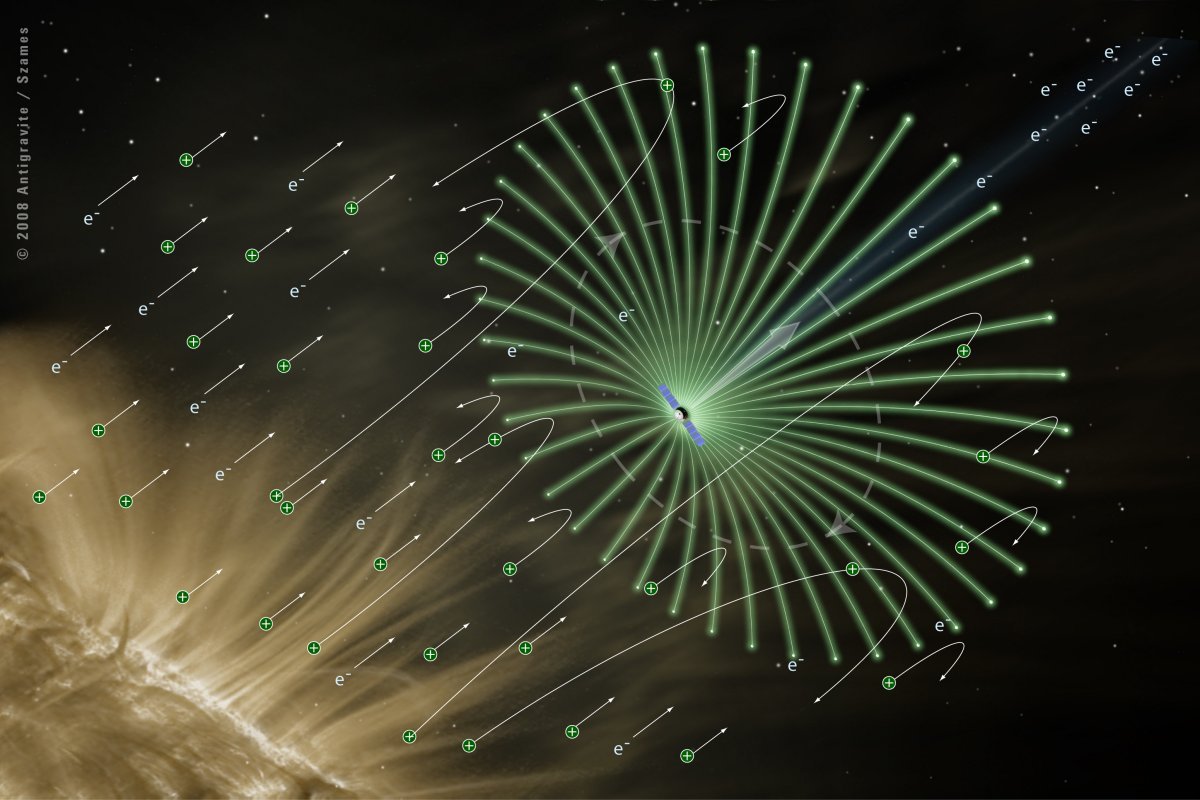MessageToEagle.com – Robotic spacecraft may ride the solar wind toward interstellar space at unprecedented speeds a decade or so from now.
Researchers are developing an “electric sail” (e-sail) propulsion system that would harness the solar wind, the stream of protons, electrons and other charged particles that flows outward from the sun at more than 1 million mph (1.6 million kilometers per hour).
“It looks really, really promising for ultra-deep-space exploration,” Les Johnson, of NASA’s Marshall Space Flight Center in Huntsville, Alabama, said of the e-sail concept here at the 100-Year Starship Symposium on Oct. 30. [Superfast Spacecraft Propulsion Concepts (Images)]
Johnson is co-principal investigator of the Heliopause Electrostatic Rapid Transit System (HERTS), an e-sail study and development project that has received two rounds of funding from the NASA Innovative Advanced Concepts (NIAC) program. (The HERTS team also includes Pekka Janhunen of the Finnish Meteorological Institute, who originated the e-sail concept in 2006), reports Space.com.

A prospective e-sail spacecraft would have 10 to 20 wires that are each 0.6 miles to 12 miles (1 to 20 km) long and extremely thin — just 25 microns in diameter, Johnson said. (For comparison, a typical human hair is about 50 microns wide.) The probe would probably rotate to keep these wires taut, he added.
“A high-voltage, positive bias on the wires, which are oriented normal to the solar wind flow, deflects the streaming protons, resulting in a reaction force on the wires — also directed radially away from the sun,” the HERTS team wrote on the NIAC website. “Over periods of months, this small force can accelerate the spacecraft to enormous speeds — on the order of 100-150 km/s (~ 20 to 30 AU/year).”
One AU, or astronomical unit, is the distance from Earth to the sun — about 93 million miles, or 150 million km. The most distant human-made object ever launched, NASA’s Voyager 1 probe, has traveled about 134 AU since blasting off in 1977. (Voyager 1, which entered interstellar space in 2012, is powered by traditional chemical thrusters.)
The e-sail idea is similar in some ways to solar-sailing technology, which has already been demonstrated in space. For example, neither one requires propellant. But solar-sailing spacecraft harness the sun’s radiation pressure, not the solar wind, and they deploy actual sails of highly reflective material rather than electrically charged wires.
The HERTS team’s work suggests that e-sailing craft can continue accelerating far beyond the point that solar-sail probes lose steam, Johnson said. For this reason, an e-sail could get a probe out to the heliopause — the edge of the sun’s sphere of influence, where the solar wind hits the interstellar medium — in 10 years, twice as fast as a solar sail could, HERTS team members have said.
But it’s not clear yet whether or not e-sails are feasible. An e-sailing probe would need to be equipped with a device called an electron gun to keep its wires positively charged (otherwise, electrons arriving via the solar wind would scuttle the propulsion system).
The team isn’t sure how much energy would be required to run an electron gun on an e-sailing craft. Two competing models of how materials charge in a plasma give very different results, Johnson said: One model suggests it’s a reasonable amount and the other implies that there’s no realistic way to generate that much energy onboard.
The HERTS team will soon conduct plasma-chamber tests and should know within the next year or two which model better represents reality, Johnson said. If e-sails do indeed turn out to be feasible, they could be propelling spacecraft toward the solar system’s outer reaches in the near future.
“The proposed HERTS can provide the unique ability to explore the heliopause and the extreme outer solar system on timescales of less than a decade,” HERTS team members wrote on the NIAC page.
“It is significantly more effective than any other near-to-mid-term propulsion system for deep-space missions, meshes well with heliospheric science payloads, and could be implemented in the 2025-2030 timeframe.”
MessageToEagle.com
via Space.com






